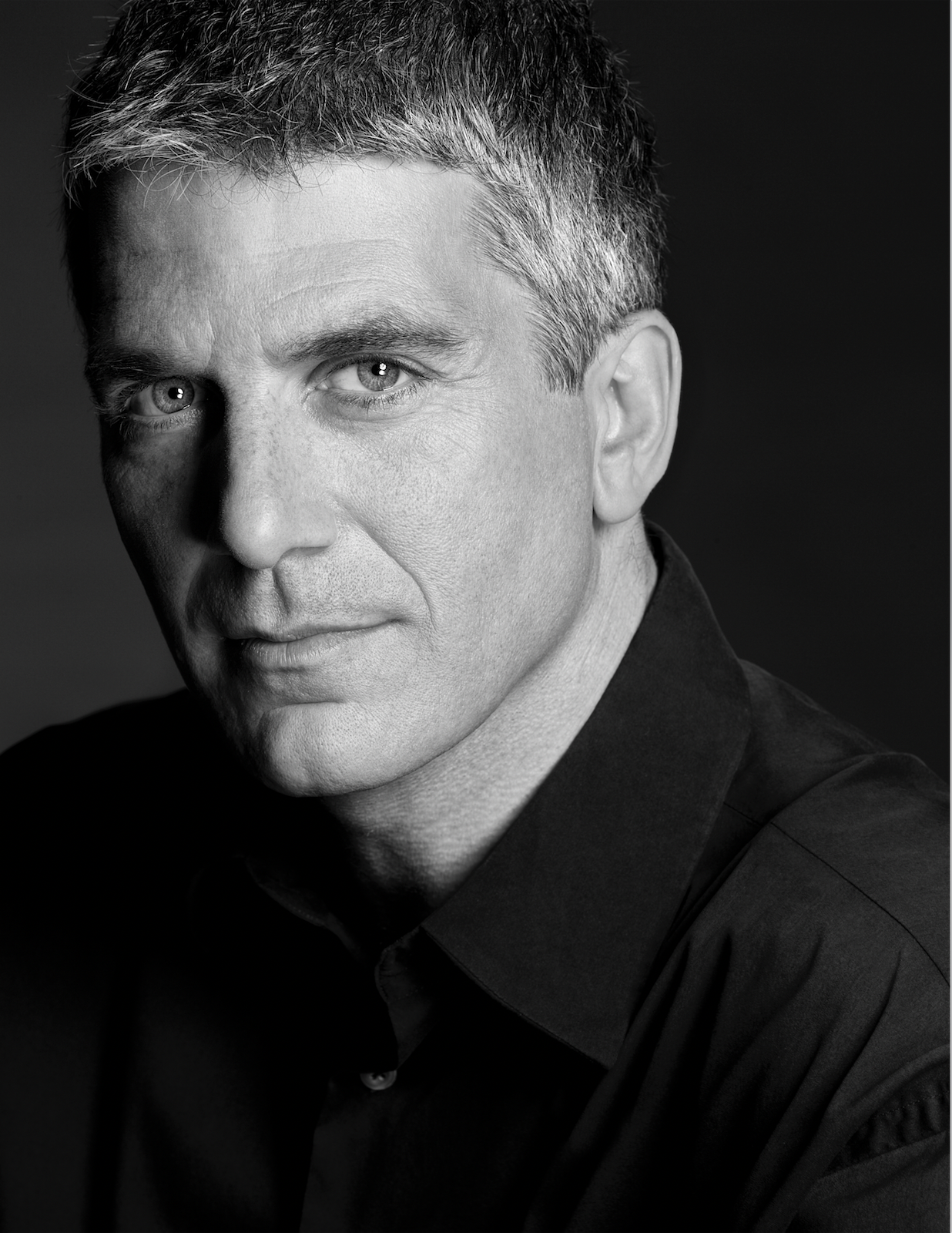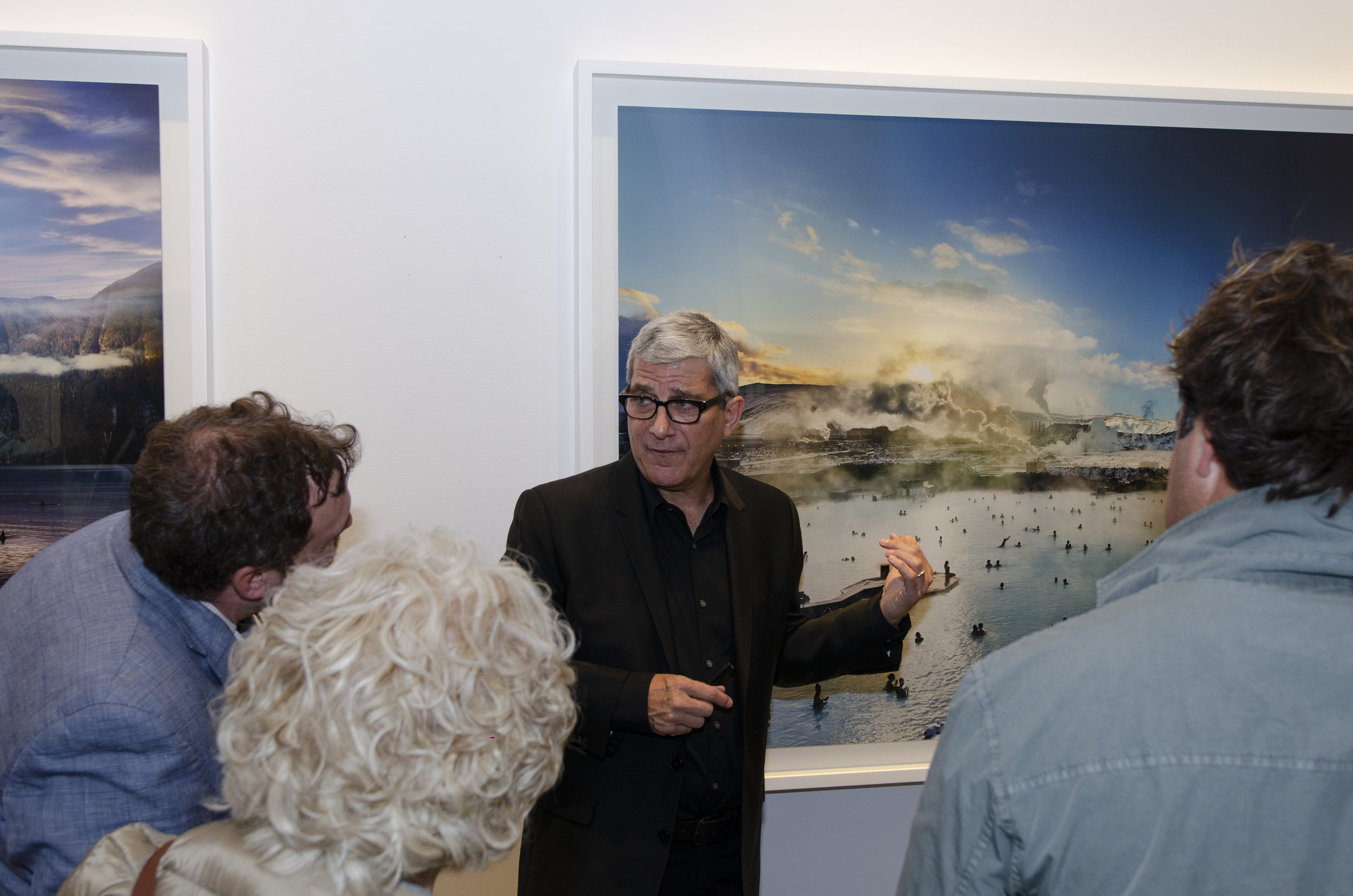In Conversation with Stephen Wilkes
Courtesy of Stephen Wilkes Photography Inc.
By Kala Herh
Executed by Isis Davis-Marks
KALA HERH: You're having a bit of a trifecta right now with the film [Jay, Myself], book [Day to Night] and show [Witness to Change]. How have the last couple of months been?
STEPHEN WILKES: Yea, it’s an exciting time. Day to Night was a ten year project. The film happened in the middle of it. Jay [Maisel] has been a friend and mentor for over 40 years. When he told me he had to move I realized this was a moment that had to be captured. I had the opportunity to tell his life story using the move as a background. It was a way of thanking him for everything he’s given me. Having the TASCHEN book come out at the same time is a gift. In a strange way, one does inform the other. Day to Night is really about the concept of seeing and the joy I have looking at things. I think that the film is about the way Jay sees the world. I’ve morphed that into a long study of a single place over time. It is really the antithesis of the way that we’re wired. People are emailing, people are chatting. The act of looking is an endangered human experience.
Lesser Flamingos, Lake Bogoria, Kenya, Africa, Day to Night™, 2017
HERH: I think you did such an exquisite job with that. I especially loved what you achieved in post-production. The way you utilized the changes of light really resonated with me. Also, the work is spot on in addressing themes of deep looking versus the modern attention span. It’s a hard balance to strike, right? On one hand the photo is so quick at capturing things. It’s so immediate in terms of how the medium functions but you want to manipulate it to address your concerns. That’s why your approach to the time-lapse is so interesting.
WILKES: Although, the word timelapse can be misleading. People hear that word and think I’m working with something automated. For example, they may think that my camera shoots every 30 seconds and then I choose from 3,000 images. That’s not it. I actually sit and stare at a place anywhere from 12 to 36 hours. I hand cock a lens and anything that catches my eye, I photograph it. I’m essentially a street photographer from 50 feet in the air. I work in the most traditional of manners. Except I capture with electronic film, with digital. I’m visualizing time change. I look at these pictures and I decide where day begins and ends. I call that a time vector. My focus moves, and I’m capturing very specific moments as time changes. At the end of the day, I may choose as many as 2,200 images. Then I’ll edit for a month to find fifty moments. Those fifty moments get seamlessly blended into the master play photograph. They’re blended based on where they were in the day based on time. I’m compressing the best moments of the day. I’m recreating my memory of the day. Photography has always been this deep connection with memory, for me. I’m putting a face on time. I found that this has a very profound effect on me. Day to Night changes me and the way that I think about the world. This deep looking, this deep study is something I’m trying to share because we’re all too connected and addicted. I once watched 300 people walk up to Sacré Cœure in Paris, take a selfie, and then walk away without even looking at Sacré Cœure. It’s come to seem that sharing is more important than the experience itself. My work wants to take you back into that space of deep looking that I feel has been abandoned.
©Andres Mercado
HERH: Making art can be such a visceral experience. It seems like you’re interested in a variety of things considering how you’re moving in to film.
WILKES: I’ve reached a point in my life where I’m interested in stretching artistically. I’m interested in telling stories that perhaps have a different feeling from my photography but at the same time, they’re challenges. Telling Jay’s story in the movie was a way to give back. Mentoring is a great gift. Jay is a great mentor. Many of the kids that I meet have been so pressured. The idea of apprenticeship is a dying thing because they need paying, full time jobs to keep up with all their expenses. It’s a different mentality. I created this film in a way so you can see Jay the way I saw him and learn from him like I did. This is my opportunity to mentor so many people, in a way. The film is a life lesson way beyond just art.
Still from Jay, Myself © Stephen Wilkes | Oscilloscope Pictures
HERH: As a young artist, mentorship has been really important.
WILKES: It’s important to contextualize these things. As I’ve looked at my work...there’s something in the show actually, I did my first really sculptural piece. I’ve recreated a turn of the century viewer. My name for it is the 3D Stereoscopic Viewer. It’s the Day to Night Time Machine. And what it does is I collect collect stereoscopic viewers that were built in the early 1900s. They’re very beautiful. They’re made of wood and they work on a gravity screen system. You put your eyes in one of them and I’ll tell you what, it’s magic. Stereo vision is a magic thing, even from 100 years ago, it still leaves you with a sense of wow. I designed this viewer so that it looks like something out of an H.G. Wells time machine. It’s made out of 2 LCD panels with stereo optics. Brass plated. Etched. The whole thing. On the side it has a knob called the time dial. It has a motion sensor for when you’re actually looking into the glasses (the stereo viewer). Inside is Coney Island. What’s really cool is that it’s in 3D so it’s like you’re looking at this miniaturized city. It’s almost addictive. It’s called a time machine because of that dial. With that dial you can stop the video and go frame by frame the way an old muniscope used to do. So muniscope was the first form of motion picture. They were single still images—cards—that were rotated fast and as you spun them you created motion affects. And you could slow them down, go forwards in time, backwards in time. So I did this with state of the art technology. It’s a really fun piece. It’s a new arena for me. I love that something can look so old and magical but with such advanced technology.
Blue Lagoon, Grindavík, Iceland, Day to Night™, 2019
HERH: In your exhibit, A Witness to Change, your photos heighten our awareness about global climate change. How does the impending climate crisis influence the way you represent nature in your photos?
WILKES: Climate change has been a theme throughout my work for many years. I was reading the data concerning what’s happening and the scale of it all was immense. I decided I would go to Greenland in July. I figured the narrative would be the icebergs, no people. The icebergs would be this time narrative. And it was July so there was no night. What ended up happening...I knew it was bad but I had no idea what I was walking into. 197 billion tons of ice liquified into the Atlantic Ocean the month I was there. This was one of the greatest melts ever in the history of the Greenland Ice Sheet. I photographed this epic scene over 36 hours from this elevated rock outcropping in Ilulissat, Greenland. I saw more humpback whales than I’ve ever seen in my life. One of the things that was so interesting was...when there is a melt of this scale, there is a tremendous amount of release of microorganisms. Anytime you have something like this you then get the smaller fish and next thing you know the humpback whales are just feasting. It’s like someone invites you over they tell you they filled the fridge and you can help yourself so you eat everything and for the rest of the week, there’s no food left. So you can see how many species become involved when there is a glacier melt and I’m just talking about the food chain. I’m not talking about what else happens when 197 billion tons of ice melts into the Atlantic.
©Andres Mercado
I’ll tell you a little personal story. I summer on Block Island, which is on the Atlantic as well. I saw tides that were so high this year. We had complete and utter coverage, even during low tide, of the sand. Huge puddles in the sand. You couldn’t even put a beach towel out because there was no sand. That’s how super saturated it was. What that says to me is, that 197 billion tons, we’re seeing that now. The speed and the scale of whats happening is really massive. And I’m bearing witness.
In the middle of the picture, in the middle of the day, I caught this glacier cap. It’s the most important part of the picture. There’s like a puddle around it. It releases what looks like milk which surrounds it. It’s right there for you to see. We are watching the dismantling of one of the greatest glaciers of our world. And this has huge repercussions. Again, people hear the numbers but they can’t really connect. Part of my job as an artist is to try to visualize the data.
HERH: Visual connection is important to help make the changes we need to make over the next ten years...which is all the time that we really have. Visuals strike people.
WILKES: Well that’s why I really put my heart into each and every picture. When you create from deep within it speaks in a different way. I know that I hear art that comes from there.
HERH: Thanks for answering all these questions.
WILKES: Well thanks for taking the time to speak to me. Take care. Bye.
Serengeti National Park, Tanzania, Day to Night™, 2015
To purchase Wilkes’ book Day to Night, look no further.














